#Koji Chino
Text

Meiko Kaji (梶芽衣子) in Fabulous Swindlers (極道ペテン師), 1969, directed by Koji Chino (千野皓司).
I posted the trailer here: https://youtu.be/MYqKE9aIEfc
36 notes
·
View notes
Text


言語学のたのしみ 千野栄一
大修館書店
装幀・挿画=鈴木康司(スズキコージ)
84 notes
·
View notes
Text
the customary graduation message
everyone probably already knows i love to write but this gets pretty personal so i think it's better posted this way. to have drafted this message in my head during those short moments of reflection between final requirements for OJT, thesis, and graduation, and it's finally here. except that it wasn't accompanied by my face full of makeup and the smug smile that i was already practicing, it didn’t involve watching myself and my batchmates in academic regalia - nope - instead, a smartphone-taken grad photo on our stairway, with myself in the formal wear that i had defended my thesis with; then cheering at the TV as my classmates' names were called. with snarky unemployment and adulting teasings put aside by the existence of my stable freelance work, there were long moments at night in quiet personal reflection. for once, i deserved to celebrate myself and my achievements - cum laude with a GPA 3.425, graduated on time despite serious hesitations and near-giving up, and in the course and school that i never regretted taking - multimedia arts, de la salle-college of saint benilde. it's a celebration that, i realized, i didn't want adulterated by the pretentiousness of celebratory posts on Facebook. the people i wanted to thank are worth more than that, honestly! so yeah, if you've already gotten tired of reading that long paragraph of how happy i felt about my finishing college, i think you should stop. or you know, keep scanning and waiting for your name to pop up when i thank you. good luck.
(in no particular order.)
i'd like to thank the 10th floor lab staff who let me borrow headphones every day in my last terms, granting me 80% more focus as i crammed thesis and org work. i’d like to thank all the staff of the college for always ensuring we felt and were safe in campus. i'd like to thank my color theory prof who told me to keep learning even though i said i wanted to repeat his subject because i was unsatisfied with how i performed in it even though i LOVED his subject. i'd like to thank my thesis adviser, who made our topic and project work through thick and thin, panic and pandemic - who became my inspiration for considering to return and teach in the college.
i'd like to thank the acquaintances, friends, teachers, moderators, production staff and actors, schoolmates, classmates, and org mates who put up with my naivety, frankness, and attempts to be better; a higher gratitude goes to those who saw more than these small parts and still stayed. i'd like to thank those who saw more than a name, a title, and GPA, more than my course, my interests, or dreams.
i'd like to thank my numerous what-ifs for teaching me about love and self-worth, for reminding me what i deserved. i'd like to thank my first ex who introduced me to the student org where i met my real love. i'd like to thank my second ex who helped me in the said org for a time. and i'd like to thank my wub for being the first to warmly welcome me into the after-college freedom.
and in retrospect, i'd like to thank those whose impact on me started even before August 31, 2016: my senior high social studies teacher who shared how he strove "to be of contribution to people", my noli me tangere teacher who broke down what was expected of us youth, and my calculus teacher who persisted in teaching us her subject even though more than half of the pilot class (myself included) could only scrape passing marks. of these, my biggest thank you is to my first mentors in journalism and design, who endorsed me to my full college scholarship. and to the preschool teacher who told me that i "was highly addicted to the mess of the room" for making paper doll dresses in class: hallo, im cum laude now! *winks*
and of course, the greatest thank you to my family for always putting up with all my academic adventures, praying that things would always turn for the best.
Sir Mike, Sir Roy, Ms Melay, Ms Kat; Sir Nuguid, Sir Jan, Sir Xander, Ms Jocas. Ms Fe, Sir Paul, Sir Lord; Sir Vincent, Sir Cao, Ms Portia, Ms Mones, Sir Blaise, Sir Jhino, Sir Jan, Sir Duran, Sir Joby, Ms Iris, Ms Myla, Ms Vanny, Sir Bong. Sir Petilla, Mrs Ferreras, Ms Gargaran, Ms Casauay; Sir Solas, Sir Cloyd. Teacher Joyce. Jerome, Tricia. Jay, Stephen, Clarisse, Janikka, Marj, Sean, Miggy; Terrence, Deejay, Sam, Kai, Ryan. Mij, Angeliz, Path, Jamie B; Jamie C, Chino, Kuya Daniel, Ate Mau, Fish, Bree. Zoe, Thea; Gene, Kyle, Emil, Aldrin, Kevin, Koji, Jason. Jason. Papa, Mama, Lolo, Lola, Dulce, Marielle, Ate Lyca, Francine.
everything in my college life was irreplaceable. no single social media caption or post can ever effectively summarize or celebrate it, but here was my attempt - i had prayed for experiences that would shape me to be the person He wanted me to be, and here i am now.
congratulations, batch 2020 graduates! we made it!!
#grad life#graduation#graduationday#college#benilde#philippines#filipino#multimedia arts#congratulations#congraduations
5 notes
·
View notes
Text
A few weeks ago, I had the pleasure of going on a tour through Cella Masumi, a renowned sake distillery in Suwa, Nagano. After the tour, I also got to enjoy some sippy-sips of Masumi’s lovely products with my clearly very refined palate.
Now what could I possibly love more than a guided tour through a sake distillery with a tasting afterwards? A helpful English guide! But wait, there’s more! The tour, tasting, and English guidance were all free! Big thanks to Chino Tabi Concierge and the Chino Tourism Organization for offering this. They were amazing.
Touring the Distillery (How Sake is Made According to What Linka Understands)
Before beginning the tour, we visited the distillery’s shrine. Sake-making is a Japanese tradition that goes waaaaaaay back, so it makes sense that the process is still firmly entwined with traditional Japanese religion. The distillery has it’s own Inari shrine, and there are other, smaller shrines ensconced in parts of the buildings.
After the shrine visit, we got kitted up in some stylish hats, jackets, masks, and shoe covers. Truly a flattering look.
Rice Polishing
The tour started with a discussion on what rice goes into making sake. Basically, rice is polished to remove bran and minerals from the hull and get down to the sweet, white center. The more rice is polished, the higher grade the sake will be. At the tasting, we were given samples of flours made from polished rice. Normally, I’m not one for just eating some flour. It was definitely not the most comfortable culinary experience. But it was very interesting to see that there is a distinct difference in taste depending on how refined the rice is.
Soaking and Steaming
The next stop on the tour was the soaking and steaming areas. The rice kernels are soaked for a very precise amount of time, depending on how polished they are. They have to absorb the exact right amount of water to make good sake. The sake goes for a ride on a conveyor belt while being soaked with spring water. Then, it goes to a vat to hang out for awhile.
After being soaked, the rice is steamed. I’m sure there’s some name for the machine they use to steam the rice, but I’m going to go ahead and call it a rice cooker on steroids. The whole room was filled with clouds of steam and smelled like a tasty lunch. Apparently, it’s important for the rice to be steamed just enough to be firm on the outside, but soft inside.
The rice for Masumi’s highest grade sake is soaked by hand in special containers called koshiki and steamed separately. Because it’s too good for the machines and deserves spa treatment.
Koji
Koji is the heart of sake. Without it, rice would never discover it’s full potential as tasty, tasty alcohol. Basically, yeast eats sugar to make alcohol. But rice is a starch, and thus isn’t exactly overflowing with sugars. Koji is a fungus (mmm mold) that breaks down the starch in rice to sugar, so the yeast can eat the sugar and make booze. The distillery had a handy-dandy microscope laying around for visitors to take a closer look at the koji on the rice. And after you’ve peered in and said something along the lines of “yep, that sure is mold there” the master brewer may or may not wander by and say “hey, would you like to put this mold rice in your mouth so you can taste how it’s developed sugars?” So yeah, I was given a little handful of special mold rice to pop in my mouth, and sure enough, it was sweet.
Rice kernels seeded with koji spores
The koji making part of the process is extremely delicate. It’s all done by hand. After the rice is steamed, it’s brought into the koji room – a room made of Japanese cypress that’s kept super warm and humid. The rest of the distillery is kept pretty cold, so sticking an arm in the koji room was a pretty shocking difference. Plus, it smelled amazing. Warm cypress is fantastic. Anyway, after the rice is sprinkled with the koji spores, it gets wrapped up in cloth. Over the next two days, it goes through various phases of being carefully mixed and spread to evenly distribute heat.
After being tended to in the koji room, the rice is moved out into the cool air and laid out on trays. The rice is arranged in these zen-garden-like swirly patterns so the rice can dry and slam the brakes on koji growth.
Yeast Mash
The translator/guide on this tour really liked using the word mash. I don’t know enough about brewing things to substitute another word, so it’s time to start the onslaught of mash! Mash this, mash that, etc. Anyway. After the koji is done doing it’s thing, you need some yeast to make the alcohol. The yeast starter is called shubo (酒母). The literal meaning of the kanji is “sake mother.” The shubo is a mixture of the koji rice, steamed rice, yeast, lactic acid, and warm water. All that hangs out in a tank for 14 days. The temperature is strictly regulated to make sure it from 1. rotting and 2. producing alcohol too quickly, ruining the taste.
Masumi Number 7
Yeast at Masumi is special. To explain why, here’s a quick bit of sake history. For most of the history of sake making, brewer’s made their own yeast blends. It was a system of trial and error and shared experience as to how each distillery or family made their brew. Then, in 1905, sake stepped into the age of science and research. A national research institute was founded to establish a registry of sake yeasts. Each strain of yeast got a number. The 7th strain, and now the most widely used in sake brewing worldwide, was discovered at Masumi in 1946. There’s a plaque in the fermentation room commemorating the discovery.
Discovery of yeast strain #7 by Dr. Shoichi Yamada
Fermentation
Ok, so now you’ve got a nice yeast starter mash thing. But it’s tiny. You want more mash to make more alcohol. But if you add a bunch of ingredients to the mash all at once, it’ll destroy the yeast culture. So it’s a 4 day process to bring the mash up to full volume.
Day 1 – Soe: The yeast starter is pumped into a tank and more rice, koji rice, and water is added.
Day 2 – Odori: The mash is pumped into a huge tank downstairs. Nothing is added.
Day 3 – Naka: A ton more rice, koji rice, and water is added.
Day 4 – Tome: Final addition of rice, koji rice, and water. The mash is now up to full volume and will ferment for a month. The brewers will constantly check in on it and adjust the temperature and water content to control the fermentation rate.
Filtering
Congratulations! Now you have alcoholic mash. But you can’t drink that, it’d be gross. So it’s gotta be filtered. The super-ultra-amazing premium sake mash is put into fine cloth bags and hung over pots to slowly gravity-filter out. All the other sake is filtered through a compression machine that squishes it through cloth panels. Like everything else in sake, this is done very gently so the flavor/purity isn’t ruined. The filtering room smells pretty amazing, because you essentially have a little bubbling fountain of sake as it’s being filtered through the machine.
Complete!
Finally, the sake is done! Sake at Masumi is either bottled or put in traditional Japanese cypress kegs. This is the tiniest keg that is made at Masumi. Isn’t it cute?
Tasting
After all that hard work of tramping through the sake distillery, we were given a generous tasting menu. Also, sake is a pretty strong alcohol. So I, and the other members of the group, quickly found ourselves to be fairly tipsy at around 10 am. Oops. But we were all very thankful for the brewers’ generosity, as well as their gift of a lovely ceramic sake cup to each person.
Now, to say I have a discerning palate is laughable at best. But it was very interesting to see how different flavor could be when the all the types of sake basically came from the same ingredients.
We sampled 4 different strains of sake (including their premium Junmai Daiginjo), an amazake (sweet, low alcohol content unfiltered sake), and an umeshu (plum liqueur).
Final verdict after learning all the intricacies of sake tasting and how to properly detect different notes: Sake is good. It’s even better when it’s free.
Touring and Tasting at Cella Masumi A few weeks ago, I had the pleasure of going on a tour through Cella Masumi…
#brewing#cella masumi#china tabi#chino tabi concierge#distillery#distillery tour#how it&039;s made#japan#japanese culture#japanese distillery#japanese sake#masumi#masumi sake#nagano#nagano sake#sake#sake distillery#sake making#sake tasting#suwa#suwa nagano
2 notes
·
View notes
Text
Una cocina llena de tradición
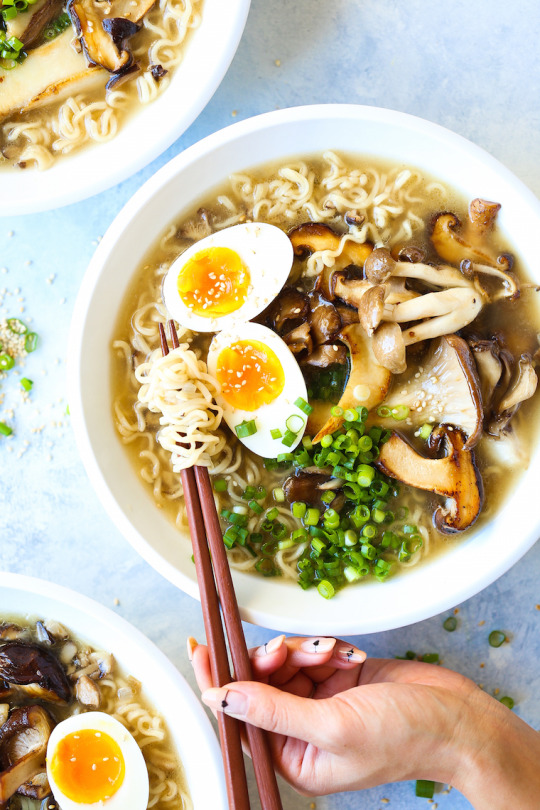
A pesar de la lejanía, es innegable la fascinación por la cocina japonesa en nuestra ciudad
Una de las maneras más sencillas y al mismo tiempo más profundas de conocer a una nación es a través de su gastronomía, los platillos cuentan las riquezas y dificultades de su suelo, la manera en que la sociedad fue sobrellevando y adaptando esas características, incluso puede hablarte de la historia, las conquistas y la filosofía. Ese es el caso de la cocina japonesa, basada principalmente en el cultivo que mejor puede prosperar en una isla volcánica con temperaturas altas en verano: el arroz, así como el pescado, el mejor aliado en un territorio donde las condiciones no propician el ganado y además cuenta con influencias budistas.
Pese a las dificultades (tanto naturales como políticas) a las que se ha enfrentado esta nación, su gastronomía es reconocida mundialmente por su atractivo visual, así como por la combinación de sabores que emplea, y es que detrás de estos platillos hay estrictas reglas en cuando a los modos de preparación y los ingredientes a utilizar, teniendo como eje central su fijación por la armonía. De igual manera, la dedicación a sus técnicas culinarias es notoria: desde los finos cortes de sashimi, pasando por la preparación a mano de los fideos para el ramen hasta la delicadeza con la que se prepara un antojo callejero como el takoyaki, el japonés pone empeño en lo que prepara.
Una vez que el País del Sol Naciente salió de su aislamiento, ha fascinado a otras naciones, incluyendo México. Las relaciones entre ambos países han permitido tanto que japoneses decidan radicar en nuestro país, como que nuestros connacionales regresen con nuevos sabores y ambiciones dentro del equipaje. A continuación te mostramos algunos restaurantes que nos asoman a esta intrincada gastronomía.
Ingredientes comunes
En tu experiencia culinaria, es probable que te topes con uno o más de estos:
• Dashi. Caldo a base de alga kombu y/o pescado que se utiliza principalmente en platos con fideos y sopa miso.
• Matcha. Se trata de una variedad especial de té verde molido empleado en la ceremonia del té. Gracias a su gran versatilidad, también se utiliza en postres y ha ganado popularidad como superalimento.
• Soya. Esta leguminosa con altas cantidades de proteína se utiliza de distintas presentaciones como salsas, germinado e incluso como base para el tofu.
• Tsukemono. Los encurtidos son parte de la dieta común de los japoneses, como el jengibre, la ciruela, los nabos, entre otros. Por ejemplo, el jengibre lo encontraremos como acompañamiento del sushi, mientras que una ciruela en medio del arroz es icónica.
• Wasabi. Esta raíz perteneciente a la familia del rábano tiene un sabor amargo ligeramente picante y se utiliza como condimento en el sushi y otros platillos.
• Narutomaki. Conocido en occidente por su presencia en el ramen y soba (así como uno que otro anime) consiste en una pasta de pescado con un diseño en espiral.
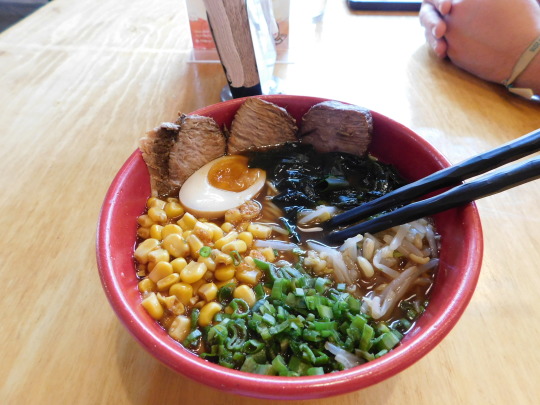
EL RAMEN DE KOJI
H: L – S de 13:00 a 21:30 h. D de 13:00 a 19:30 h.
Av. Vallarta 3300, Primer piso, local 26
Av. Rafael Sanzio 632, Local 1
El restaurante ha sido la manera en que Koji Matsuo agradece la hospitalidad de los mexicanos a la vez que comparte su cultura natal con uno de los platillos más conocidos fuera de su país: el ramen. Aquí personalizas el ramen a tu gusto desde el caldo, los fideos e incluso los topping y la proteína que llevará, contemplando también una opción vegana y algunas recomendaciones para los indecisos. También cuentan con bocadillos como sushi, postres y cervezas japonesas. Su éxito ha sido tal que recientemente abrieron una nueva sucursal.
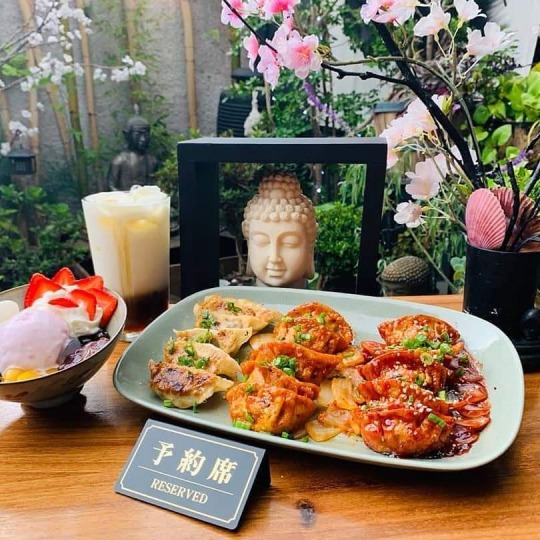
MOMOTABI GYOZA & CURRY HOUSE
H: Mie y J de 19:00 a 22:00 h. V - D de 15:00 a 22:00 h.
Av. México 2069, Col. Ladrón de Guevara T/ 3315733540
El equipo de Momotabi destaca por su esmero para brindarles a sus comensales una experiencia con toda la esencia del País del Sol Naciente. Además de su asombrosa ornamentación, encontrarás una interesante variedad de gyozas para compartir entre amigos y un curry que evoca la nostalgia gastronómica de una nación, todo elaborado desde cero. Los postres son un paso obligatorio con sus sabores y texturas únicos, ya sea que busques algo fresco y ligero como un raspado o un complejo paraíso dulce como el Sweet Moriawase.
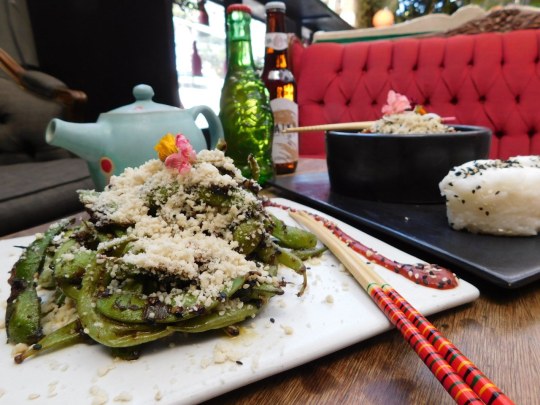
UKE MOCHI
H: L - J de 15:00 a 23:00 h. V y S de 15:00 a 0:00 h.
José María Vigil 2991, Col. Providencia T/ 3315223736
Nombrado así en honor a la diosa de los alimentos y la vitalidad, el local nos demuestra que si hay algo que le sobra a la comida vegana es la variedad y versatilidad. Aquí encontrarás platillos de fusión oriental completamente veganos y bastante coloridos. Entre las opciones japonesas encontrarás sushi, irresistibles edamames y también bebidas como la cerveza Lucky Budha y Nami, el primer sake mexicano.
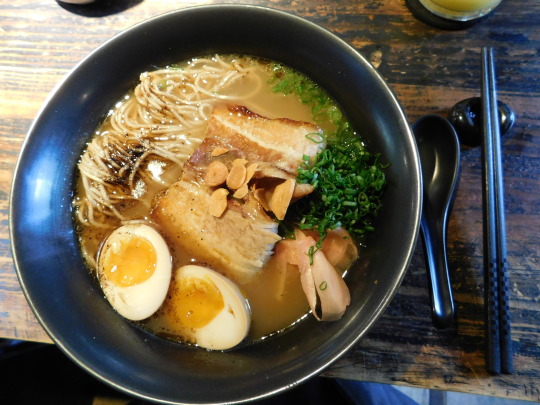
HATO
H: L – D de 13:00 a 23:00 h.
Efraín González Luna 2079, Col. Americana T/ 3323068783
Autoproclamado como “Fine Ramen”, la cocina de este lugar se distingue por el extremo cuidado en la técnica y los insumos que utilizan en la interpretación que el chef Paul Bentley a la oferta gastronómica de Japón. El fuerte de este lugar es el ramen, con una diversa carta dedicada a este platillo siendo el Ramen de Foie Gras el platillo insignia de Bentley. Adiconalmente, encontrarás donburi (platillo a base de arroz, carne y vegetales) así como wraps de cerdo, gyozas y deliciosos postres como mochi y cheesecake japonés.
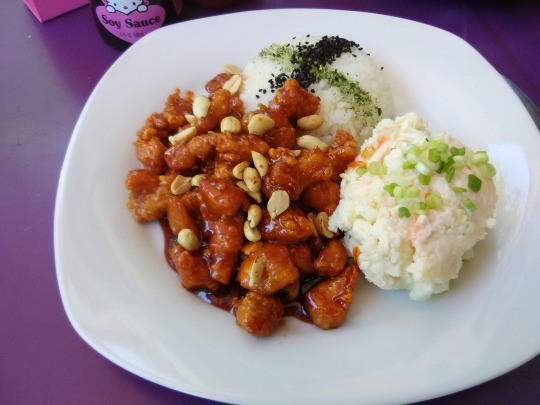
KITSUNE IZAKAYA
H: L – S de 14:00 a 22:30 h.
Libertad 1611, Col. Americana T/ 3315242998
El local busca recrear la dinámica de las izakayas japonesas, lugares a donde los empleados acuden después de su jornada para relajarse un poco, beber y compartir algún platillo con tus amigos. Entre sus entradas encontrarás gyozas, takoyakis y edamames, mientras que en las especialidades encontrarás el coreano dankgangjeon (pollo frito con cacahuates bañado en salsa agridulce). Puedes beber sake o cervezas japonesas, pero también hay opciones sin alcohol como el calpis lychee y el café vietnamita.
Restaurantes japoneses
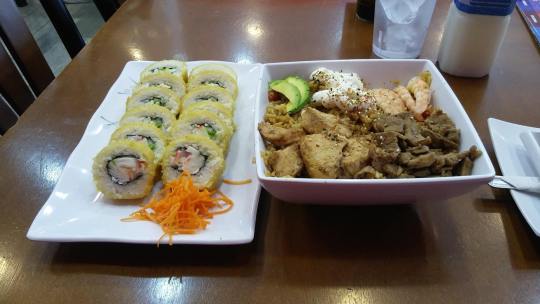
PANDA ROLL
H: L-D, de 12:00 a 21:00 h
Enrique Díaz de León 343, a media cuadra de Independencia.
Su historia se remonta a dos decenios y siguen avanzando, entre sus más recientes sucursales se encuentra aquella por Enrique Díaz de León y la visitamos recién.
En su menú hay un gran número de opciones para elegir, en entradas sus aros de calamar, sus brochetas de pollo, camarón o queso. Encuentras sopas de pasta udon, conos, fideos chinos, y una amplia selección de ramen bowls.
Lo que destaca sin duda son sus sushis, les recomendamos ir directo a los especiales. De nuestros favoritos está el “Especial Roll”, con pepino, aguacate, queso crema por dentro, camarón y pulpo por fuera con topping kanikawa, aguacate encima, bañado en salsa de anguila y ajonjolí.
Otro para no dejar pasar es el “Tokyo Roll”, pepino, aguacate, queso crema por dentro, encima más queso crema con ajonjolí, topping kanikawa, bañado en salsa de anguila. Cada uno que pruebes te dejará satisfecho, es una combinación de sabores deliciosa.
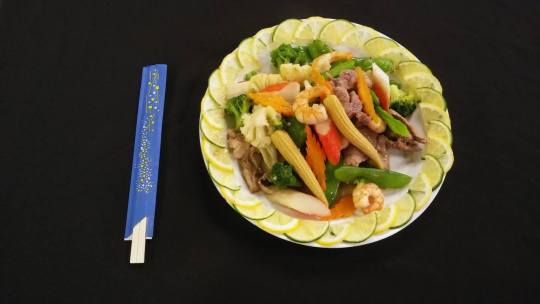
SUKI SUSHI BUFFET
H: L-J, de 10:00 a 21:00 h, V-S, de 10:00 a 21:30 h
Av. Juárez 523 entre Donato Guerra y Enrique González Martínez. T/3658-3943
El lugar es amplio, en la entrada a tu izquierda encontrarás su banda giratoria de sushis, y ahí comienza la aventura. Si el antojo es sobre este platillo puedes sentarte alrededor de este módulo y tomar los sushis que se te antoje al ver pasar.
O puedes llevar los que te coquetean en tu plato a tu mesa, sobre todo si es la primera vez que llegas porque vale la pena disfrutar de todo lo que encontrarás. Las opciones son una combinación de cocina japonesa y china. Encuentras en la barra platillos como rollos primavera, camarón empanizado que estaba delicioso, filete de pescado, pollo en diferentes presentaciones como “a la naranja”, costillitas que estaban para chuparse los dedos. También lomo, arrachera, y una selección de verduras, brócoli, champiñón, arroz. Hay sopa de mariscos y fideos chinos y más adelante hay platillos a la plancha que puedes pedir, si se te antoja un arroz o algunas verduras puedes pedirlas.

RADZO
H: Ma-J, de 14:00 a 21:30 h; V-S, de 14:00 a 22:30 h; D, de 14:00 a 18:30 h
Vidrio 2074 a media cuadra de Av. Chapultepec.
Para comenzar en las entradas no pueden faltar los bao, nosotros probamos el de cerdo, elaborado con panza de cerdo, vegetales, encurtidos, aderezado con mayonesa de ajo asado. La textura es ligera y la explosión de sabores abre el apetito en espera del plato fuerte. En este rubro también encontrarás gyozas de cerdo y camarón, un gohan y yakitori de pollo.
Antes de llegar a las estrellas de lugar, el menú te ofrece también hamburguesas, con la Buta Burgers como una de las favoritas, elaborada con láminas de chashu (cerdo marinado japonés), tomate asado y lechuga. O puedes probar su versión veggie con portobello asado, tofu, tomate asado, espinaca, aderezada con mayonesa de ajo y aderezo asiático.
Los ramen es lo que hay que presumir de Radzo, y nosotros probamos el Tonkotsu, en caldo a base de huesos de cerdo, noodles, huevo tierno, alga nori, espinaca, germinado de soya, cebollin, naruto y chashu. Tienen un par de aderezos de casa que vale la pena pedirlos para terminar de sazonar el caldo, queda picosito y muy rico.
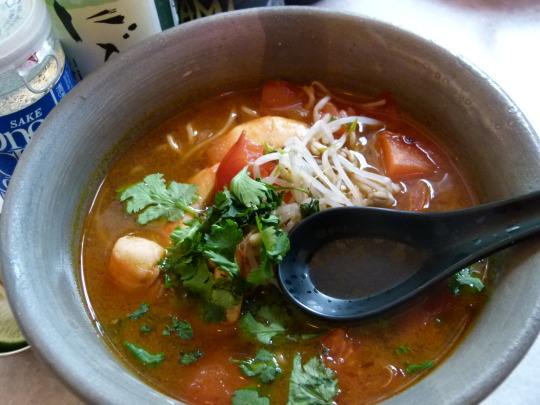
TORA TORA
H: L, Mie-S, de 14:00 a 22:30 h, D de 14:00 a 18:00 h, Martes cerrados.
Libertad 1972 entre Chapultepec y Progreso.
Es el tercero de una familia de restaurantes enfocados a la comida oriental, de seguro conoces a Peko Peko y Uma Uma. Para abrir apetito te recomendamos un gua bao, pan al vapor con panceta con piel cocida, con especias orientales, cilantro, chicora marinada y cacahuate, está para chuparse los dedos. Aquí sus estrellas son los okonomiyakis, uno de los platillos japoneses más tradicionales, cocinado en plancha de hierro y con ingredientes básicos como harina de trigo, huevo, col, carnes y mariscos.
También llevan mayonesa, salsa okonomiyaki, pescado, jengibre rojo y alga marina en polvo. Tienen dos estilos: el Osaka y el Hiroshima, nosotros probamos el segundo de panceta y fue un descubrimiento afortunado al paladar. Otra recomendación a ojos cerrados es el ramen japonés, con caldo de pollo y en diferentes opciones como el tantan con carne molida de cerdo, huevo marinado, germinado de soya, espinaca, cebolla cambray, ajonjolí y cacahuate.
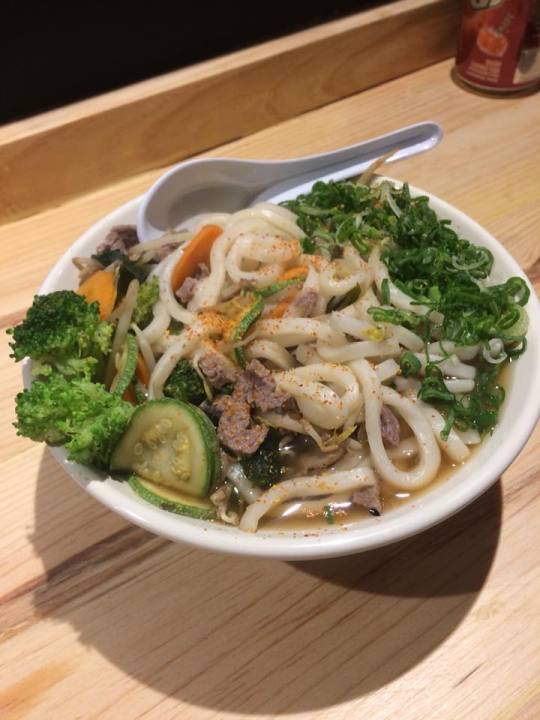
ATARASHI 33
H: L-S, de 13:30 a 20:30 h
Morelos 995 a unos pasos de Av. Enrique Díaz de León. T/3826-8382.
Apenas a unas cuadras del Templo Expiatorio tiene un amplio menú de comida japonesa. Encontrarás los básicos, los onigiris que son esas bolas de arroz empanizado, sashimis de corte delgado, gohan, los rollos California, teppanyakis, yakimeshis, entre otros.
Y por supuesto que las opciones de casa, las especialidades, de las cuales probamos por ejemplo el llamado Pozolito, una sopa caliente con camarón, pulpo y osaji, acompañado de pasta, aguacate, limón y cebollín. Por supuesto que los sushis son imprescindibles, como su rollo de Camarón por fuera, con un top de mango encima y salsa de anguila, delicioso. O que tal el que lleva el nombre de casa, el sushi Atarashi 33 lleva pulpo por fuera, mango y sashimi.
El yakimeshi también encanta desde la vista y termina de convencer al primer bocado, que al igual lo puedes pedir con pollo, res, camarón, salmón o las combinaciones disponibles. Otras de sus especialidades son sus makis, de camarón, pollo, res, entre otros.
No.1144. 160819
7 notes
·
View notes
Link
Japón y Estados Unidos comienzan un importante ejercicio militar a medida que crece la preocupación por China - El ejercicio Keen Sword es el primer gran ejercicio desde que Yoshihide Suga se convirtió en primer ministro de Japón el mes pasado con la promesa de continuar la preparación militar destinada a contrarrestar a China, que reclama islas controladas por Japón en el Mar de China Oriental. Keen Sword, que se lleva a cabo cada dos años, involucra a decenas de buques de guerra, cientos de aviones y 46.000 soldados, marineros e infantes de marina de Japón y Estados Unidos. Hasta el 5 de noviembre, incluirá entrenamiento en guerra electrónica y cibernética por primera vez. “La situación de seguridad en Japón se ha vuelto cada vez más grave. Esto nos da la oportunidad de demostrar la fuerza de la alianza Japón-Estados Unidos ”, dijo el general Koji Yamazaki, máximo comandante militar de Japón, a bordo del porta helicópteros Kaga en aguas al sur de Japón. El buque de guerra más grande de Japón estaba acompañado por el portaaviones estadounidense USS Ronald Reagan y sus destructores de escolta. El Kaga de 248 metros (814 pies), que regresaba de las patrullas en el Mar de China Meridional y el Océano Índico, se reacondicionará el próximo año para transportar cazas furtivos F-35. Este mes, Suga visitó Vietnam e Indonesia como parte de los esfuerzos de Japón para reforzar los lazos con aliados clave del sudeste asiático. Eso siguió a una reunión en Tokio del “Quad”, una agrupación informal de India, Australia, Japón y Estados Unidos que Washington ve como un baluarte contra la creciente influencia regional de China. Beijing lo denunció como una “mini-OTAN” con el objetivo de contenerlo. Japón se ha preocupado particularmente por un repunte en la actividad naval china alrededor de las islas en disputa en el Mar de China Oriental que Tokio afirma como Senkaku y Diaoyu en Beijing. Acompañando al general Yamazaki en el Kaga, el teniente general Kevin Schneider, comandante de las fuerzas estadounidenses en Japón, señaló la actividad reciente de China que preocupaba a Washington y Tokio, incluidas las nuevas leyes de seguridad en Hong Kong que habían socavado la autonomía del territorio, el desarrollo militar de China en el sur. Mar de China y el acoso de Taiwán por parte del ejército chino en los últimos meses. http://diariozombie.ar/japon-y-estados-unidos-comienzan-un-importante-ejercicio-militar-a-medida-que-crece-la-preocupacion-por-china/ #army #eeuu #china #japon #armada #army #guerra #marina #fuerzaAerea
0 notes
Text

Meiko Kaji (梶芽衣子), Frankie Sakai (フランキー堺), Shiro Otsuji (大辻伺郎) and Junzaburo Ban (伴淳三郎) in Fabulous Swindlers (極道ペテン師), 1969, directed by Koji Chino (千野皓司).
#Meiko Kaji#梶芽衣子#梶 芽衣子#Charlatan Gangster#極道ペテン師#Koji Chino#千野皓司#Frankie Sakai#フランキー堺#Shiro Otsuji#大辻伺郎#Junzaburo Ban#伴淳三郎#press photo#charlatan gangster
18 notes
·
View notes
Text
Arranca 'We Are One', el certamen que reúne en YouTube a 21 grandes festivales de cine

Fotograma de 'Eeb Allay Ooo!', una sátira que ganó el Premio Golden Gateway del Festival de Bombay.
El certamen ofrece 100 películas de 35 países seleccionadas por 21 festivales de cine, que incluirán 13 estrenos mundiales y 21 estrenos online.La crisis del coronavirus ha obligado a los festivales de cine tradicionales a adaptarse al medio digital a marchas forzadas. Menos de dos meses han tardado sus organizadores en presentar el prgrama formada por filmes de 35 países. Ahora, por fin, desde el viernes 29 de mayo hasta el domingo 7 de junio, los espectadores de todo el mundo podrán disfrutar, de forma gratuita, de 'We Are One: A Completo Film Festival', un plan que reúne en Youtube a los 21 festivales de cine más importantes del mundo. Entre otros contenidos, el certamen ofrece más de 100 películas, clases magistrales y actuaciones musicales.Impulsado por el Festival de Cine de Tribeca y en el que participan, entre otros, los certámenes de Venecia, Berlín, San Sebastián, Sundance, Toronto, Sarajevo y Mumbai, el festival ha tenido como principal objetivo la solidarirdad con el manifiesto y con los artistas, cuyos estrenos se han trillado muy afectados por la pandemia.Los títulos que podrán estar a través del canal de YouTube han sido elegidos por comisariados de varias nacionalidades. Entre las 100 películas seleccionadas, destacan 13 estrenos mundiales, 31 estrenos online y cinco estrenos internacionales online.En la programación destacan filmes como 'Ricky Powell: The Individualist', un documental sobre el proverbial fotógrafo callejero que cuenta con entrevistas realizadas a Natasha Lyonne y LL Cool J; el estreno de 'Eeb Allay Ooo!', una sátira que ganó el Premio Golden Gateway del Festival de Bombay sobre repelentes de monos profesionales; y el estreno mundial de 'Iron Hammer', un emotivo documental dirigido por Joan Chen sobre la suerte olímpica del balonvolea chino Jenny Lang Ping.El Festival de San Sebastián, por su parte, ha estimado tres títulos: 'Los pasos dobles' (2011), largometraje de Isaki Lacuesta que ganó la Concha de Oro, y dos producciones sobre civilización y cocina vascas, 'Dantza' (Telmo Esnal, 2018) y 'Mugaritz BSO' (Felipe Ugarte, Juantxo Sardon, 2011).Adicionalmente, el manifiesto tendrá entrada a más de 50 cortometrajes de documental y ficción, como el estreno mundial de 'The Yalta Conference Online', creado en monopolio para el festival por el director japonés Koji Fukada; así como los primeros cortometrajes de Dreamworks Animation, 'Bilby', 'Marooned' y 'Bird Karma'.La programación de series acoge el estreno mundial de 'Losing Alice', thriller psicológico israelí protagonizado por mujeres y 'And She could be next', una serie documental de dos episodios sobre las experiencias de las mujeres de color que se postulan para un cargo político.'We Are One' organiza, asímismo, una serie de charlas seleccionadas para la ocasión. Algunas fueron celebradas en ediciones anteriores de diferentes festivales, mientras que otras han sido diseñadas especialmente para este evento.Algunas de estas conversaciones o clases magistrales estarán protagonizadas por cineastas como Francis Ford Coppola, Steven Soderbergh, Song Kang-ho, Bong Joon-ho, Guillermo del Toro, Jane Campion y Claire Denis.La selección de verdad posible 360 constará del documental nominado al Emmy 'Travelling While Black' y 'Atlas V', una historia de ciencia ficción protagonizada por Bill Skarsgård, así como títulos adicionales con conocidos protagonistas como John Legend, Oprah Winfrey y Lupita Nyong'o.Igualmente habrá actuaciones musicales especiales, incluida una sesión de DJ de 30 minutos a cargo de Questlove.Cine y SeriesPelículas
Read the full article
0 notes
Photo

オレンジ (Orange)
MOVIE DETAILS
Title: Orange-オレンジ―
Title (romaji): Orange -Orenji-
Title (english): Orange
Genre: Teen-Romance / Time Travel / Based on a Comic
Release Date: December 12, 2015
Runtime: 139 min.
Distributor: Toho
Theme Song: Mirai by Kobukuro
PLOT
Takamiya Naho (Tsuchiya Tao) is a 2nd year high school student. During the spring, Takamiya Naho receives a letter sent by herself from 10 years in the future. In the letter, she liked transfer student Naruse Kakeru (Yamazaki Kento). Naruse Kakeru carried emotional scars from his mother's suicide and he died one year later. 26-years-old Naho Takamiya thinks about Kakeru Naruse often.
2nd year high school student Takamiya Naho, with the knowledge of what she feels 10 years in the future, takes action to change her future.
TRAILER
youtube
SPECIAL MUSIC VIDEO
youtube
CAST
Tsuchiya Tao as Takamiya Naho
Yamazaki Kento as Naruse Kakeru
Ryusei Ryo as Suwa Hiroto
Yamazaki Hirona as Chino Takako
Sakurada Dori as Hagita Saku
Shimizu Kurumi as Murasaka Azusa
Mano Erina as Ueda Rio
Tsurumi Shingo as Nakano Koji
Moriguchi Yoko as Naruse Miyuki (Kakeru's Mother)
Kusamura Reiko as Naruse Hatsuno
PRODUCTION STAFF
Director: Hashimoto Kojiro
Original writer (manga): Takano Ichigo
Screenwriter: Arisa Kaneko
Cinematographer: Nabeshima Atsuhiro
Sound : Komatsu Masato
WEBSITE
Official Homepage: www.orange-movie.com
Official Twitter: @orange_letter_
source : AsianWiki, Wikipedia
SPOILER
Yamazaki Kento played as Kakeru, a transferred student from Tokyo. He moved to Matsumoto because his mom worried about him who didn't have friends at his past school. Right after he moved to the new school, he met & get new friends. They spent the new semester ceremony & have fun together. But then he went absent for 2 weeks. All these affairs was fully written in a letter which Naho received from herself 10 years in the future. What actually happened? How the letter will lead Naho, Kakeru & friends to? Find the full story by download or stream here:
[DOWNLOAD LINK]
RAW VIDEO : Doramax265 | Doramax264 | Ganool
SUBTITLES
STREAM (with engsub)
3 notes
·
View notes
Text
PEDOFIL KOJI NE ODUSTAJE, IZAŠAO JE IZ ZATVORA NAKON 12 GODINA 'Zašto si me napastvovao? Zašto? zašto baš mene?', pitala ga je...'Nešto je zlo u meni'
PEDOFIL KOJI NE ODUSTAJE, IZAŠAO JE IZ ZATVORA NAKON 12 GODINA 'Zašto si me napastvovao? Zašto? zašto baš mene?', pitala ga je…'Nešto je zlo u meni'
Krajem svibnja ove godine pod okriljem noći iz kalifornijskog kaznenog zavoda za muškarce, poznatom pod nazivom Chino, prema istoimenom gradu u okrugu San Bernardino, na slobodu je pušten jedan stari, mršavi i oronuli Amerikanac. Ne, on nije diler ni ubojica, nego French Anderson, briljantni znanstvenik koji je kao pionir genske terapije 1990-ih godina bio na naslovnicama vodećih svjetskih…
View On WordPress
0 notes
Photo
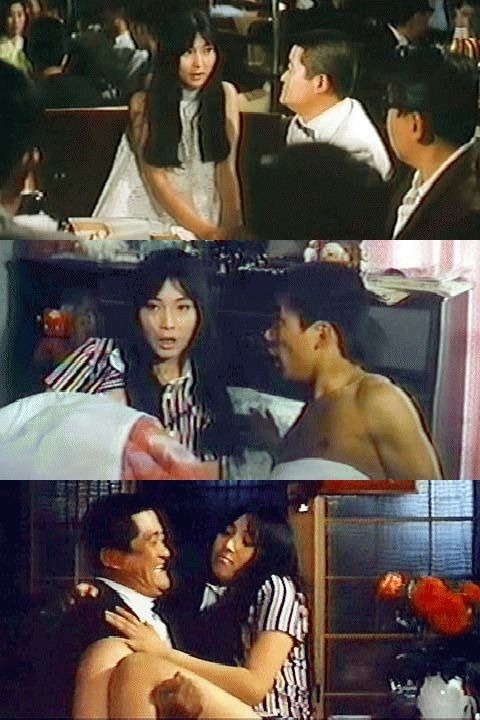
Meiko Kaji (梶芽衣子) in some screencaps from Charlatan Gangster (極道ペテン師), 1969, directed by Koji Chino (千野皓司).
http://fuckyeahmeikokaji.tumblr.com/
29 notes
·
View notes
Photo
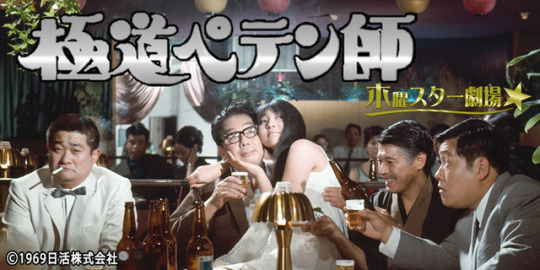
A press photo for Charlatan Gangster (極道ペテン師), 1969, directed by Koji Chino (千野皓司) and starring:
Meiko Kaji (梶芽衣子)
Frankie Sakai (フランキー堺)
Shiro Otsuji (大辻伺郎)
and Junzaburo Ban (伴淳三郎).
This was used to advertise the film being shown on Chiba TV in January.
http://fuckyeahmeikokaji.tumblr.com/
#Meiko Kaji#梶芽衣子#Frankie Sakai#Koji Chino#Junzaburo Ban#Shiro Otsuji#Charlatan Gangster#極道ペテン師#千野皓司#フランキー堺#大辻伺郎#伴淳三郎#press photo
11 notes
·
View notes
Photo
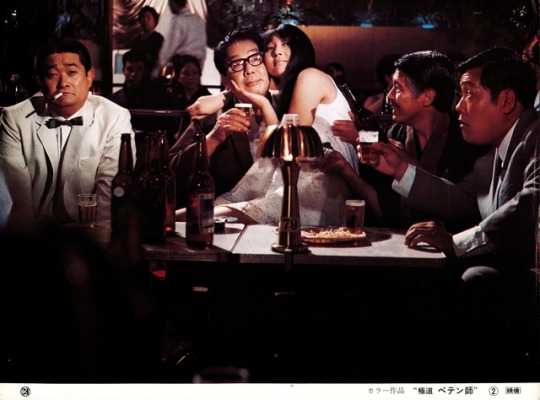
Lobby card for Charlatan Gangster (極道ペテン師), 1969, directed by Koji Chino (千野皓司) and starring:
Meiko Kaji (梶芽衣子)
Frankie Sakai (フランキー堺)
Shiro Otsuji (大辻伺郎)
and Junzaburo Ban (伴淳三郎).
Scanned by me.
http://fuckyeahmeikokaji.tumblr.com/
#Meiko Kaji#梶芽衣子#梶 芽衣子#Charlatan Gangster#極道ペテン師#Koji Chino#千野皓司#Frankie Sakai#フランキー堺#Shiro Otsuji#大辻伺郎#Junzaburo Ban#伴淳三郎#lobby card#scanned by me
34 notes
·
View notes